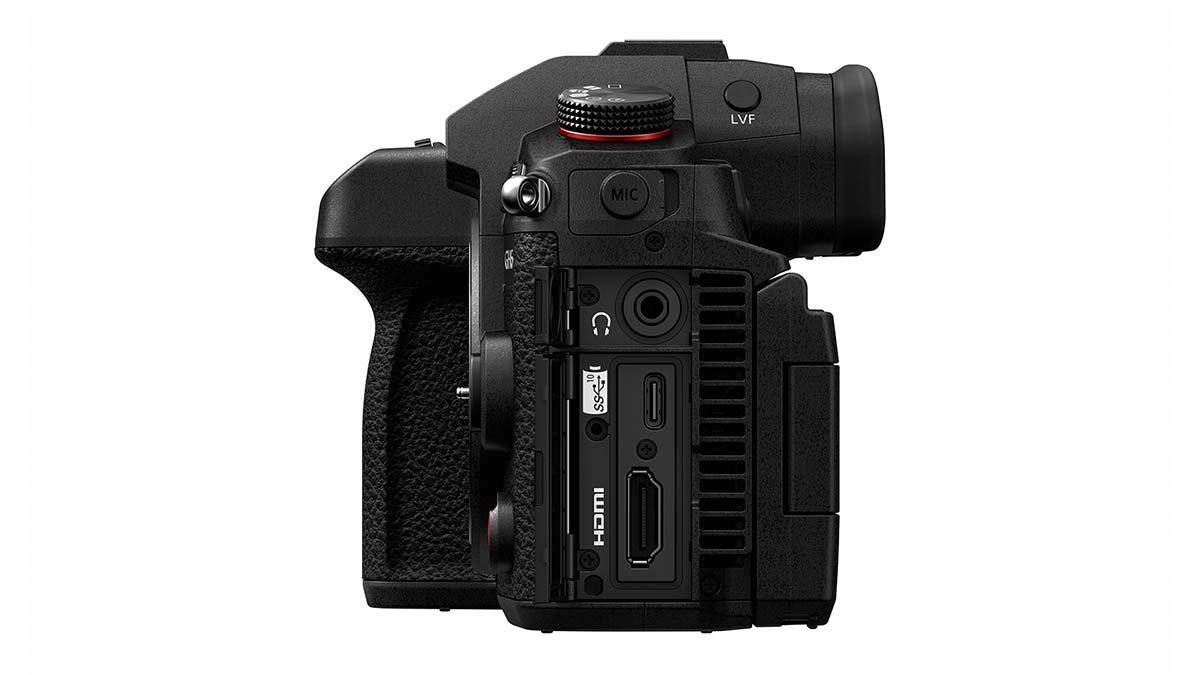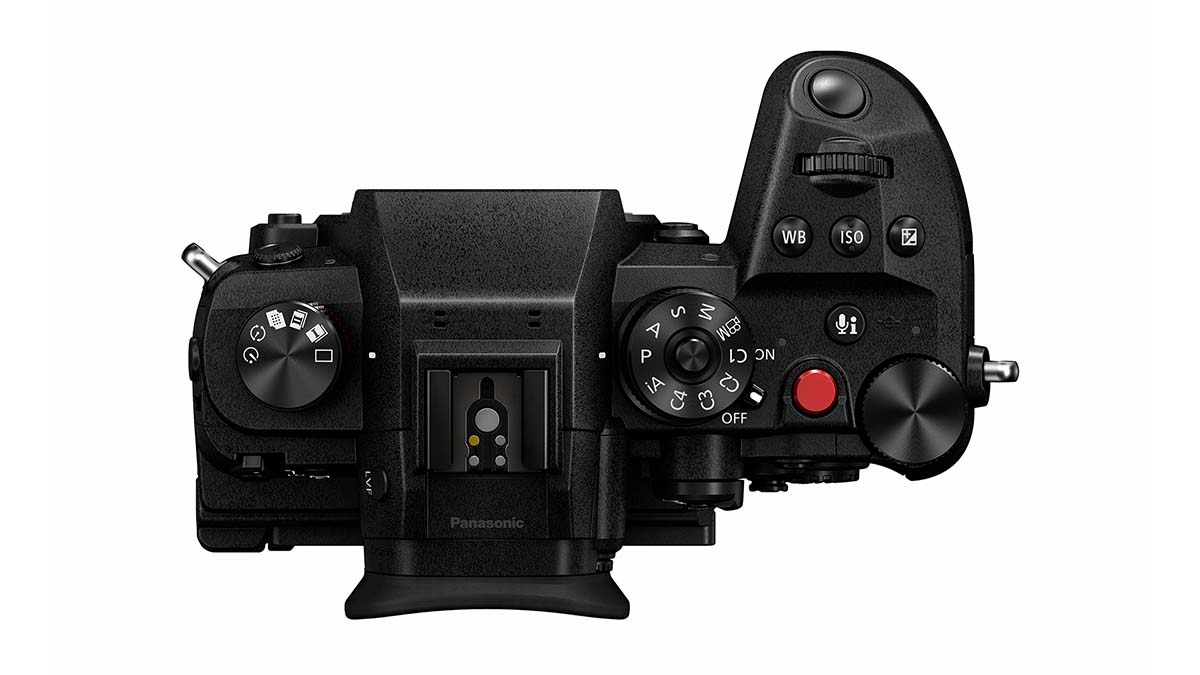The Panasonic LUMIX GH6 was delayed last year, but now it is finally being released, and the specs are extremely compelling.
I should begin by telling you that I've been using the GH6 in the run up to this announcement and that my full review will be forthcoming very soon. The GH6 is a new mirrorless camera from Panasonic LUMIX, and rather than being a replacement for the GH5, it is being aimed at a very different set of users.
If I could encapsulate the GH6 in a short sentence it would be that it is an S1H with a Micro Four Thirds sensor. The GH6 is being very much aimed at early adopters and professionals for who the absolute best image quality is required. The GH6 is smaller and lighter than the S1H, and in some cases it is actually a more capable camera. Why? Well for one thing Panasonic has incorporated a feature that I don't think anyone saw coming (unless there was a leak somewhere), and that's internal recording to ProRes.


This isn't the RAW variation; that particular flavour can be recorded via an Atomos Ninja V/V+. Including internal compressed raw would have fallen foul of certain patents for which we won't open any more cans of worms for. However the inclusion of 10-bit internal ProRes is extremely welcome, making for very edit friendly footage.
On release ProRes will only be available in 5.7K resolution modes, although 4K and FHD ProRes will appear at a later date. The format can also only currently be recorded to the CFexpress Type B card slot. With the forthcoming firmware update footage can be recorded to a USB-C external SSD.
If you don't wish to record to CFexpress, the GH6 still features both LongGOP and All-Intra 10-bit codecs as alternatives, with high bitrates available up to 400Mbps.
Panasonic GH6 specifications
The GH6 overall has some very compelling abilities. It has a fan cooling system with adjustable fan speed for noise control and unlimited recording times. 4K at up to 120fps is possible for slow motion in 4:2:0 10-bit colour, as well as eventually for output over HDMI to the Ninja V+ in a further firmware update.
17:9 5.7K recording features prominently, and there is also a 4:3 anamorphic mode of 5.8K resolution (5760x4320). 5.7K can be recording in H.265 format at up to 60fps in LongGOP, whilst ProRes formats can be recorded at up to 30fps.

Top view of the Panasonic GH6. Image: Panasonic.

There's full fat V-Log/V-Gamut as well, giving 12+ stops of dynamic range. This can be increased to 13 stops or more by using an enhance dynamic range boost, which uses the dual base ISO circuits together to capture shadow and highlight data. I'm still in testing at the moment so I have yet to see if this results in any ghosting when fast motion is captured. Ultra-slow motion fanatics will be pleased to see that in 1080p the GH6 can capture up to 300fps.
Just like the S1H, the GH6 can be switched into a 24Hz mode for integer 24p recording. Very welcome indeed. There are other features, too, that give strong hints as to where the camera is aimed, such as the V-log View Assist, which lets users import their own .CUBE LUT files. Monitoring functions such as a waveform monitor, zebra pattern, luminance spot meter, anamorphic desqueeze display, red REC frame indicator and tally lamps are also available.
Rear view of the Panasonic GH6. Image: Panasonic.
Stills are not the main focus of the GH6, however as an indication of how the new Venus engine and new sensor perform, the camera is capable of taking high speed stills bursts of 25.2MP resolution using the electronic shutter at up to 75fps. This isn't just a 'movie' mode by another name as it has been on previous cameras. These are fully fledged stills images, including raw images. The buffer is a few seconds long, and it can take some time to write all the images to the card (the CFexpress slot is much faster), but it does let you capture some very fast motion images in very high quality.
Viewfinder and monitor screen
The rear LCD monitor has a 1840 dot resolution and 3-inch diagonal size. It is fully articulating, so it can be tilted upwards away from the body, as well as down, and swung out to the side. The EVF is a 3680 dot OLED, and from what I've been seeing is incredibly clear and easy to use.
The Panasonic GH6 showing the articulating rear LCD screen. Image: Panasonic.
The connectivity on offer is also good, with timecode being possible by way of an adaptor through the flash synchro port. There's also a full size HDMI type A connection, 3.5mm headphones, and a USB-C port that can be used for both fast changing and powering by an external battery pack, or for recording to an SSD (in a future firmware update). The internal swappable battery is rated at 2200mAh.
Despite the fact that some people will never love the stills camera form factor, Panasonic has been thinking about how the camera behaves when rigged up. With this in mind it has provided a record button on the front lower left side of the body. When attached to a shoulder rig this makes the record button available in a similar place to an ENG type camera, and prevents the need to reach over to the top of the body to start recording.
The front of the GH6 showing the record button on the lower left of the body. Image: Panasonic.
The GH6 features 5GHz wifi alongside 2.4GHz. This can be used by apps for control and the transmission of footage and images, but also so that camera settings can be copied over to different devices on a multi-camera shoot.
Conclusions and analysis
The GH6 looks to be a very powerful tool, and from what I can tell during my initial use it is the upgrade from the GH5 that many will have been looking for. Full-frame isn't everything, and the Micro Four Thirds sensor here has an incredibly adaptable lens mount. Anamorphic shooting is made much more affordable by sensors of this size, too.
One question that will be on many peoples lips will be regarding the auto-focus. Is it phase detect? I'm afraid those waiting for this will be disappointed. The GH6 still uses a contrast based system, however the processor inside the camera is new, so don't write it off just yet! I have still to do more tests with this so I don't wish to comment either way just yet.
What I can say is that in all other respects the feature set on the GH6 is incredibly good, and so is the price. At an RRP of £1,999.99 for the body and £2,199.99 with a 12-60mm kit lens, the value here should be clear to see.
Look out for my full Panasonic GH6 review dropping here very soon. To find out more in the meantime, visit the Panasonic website.